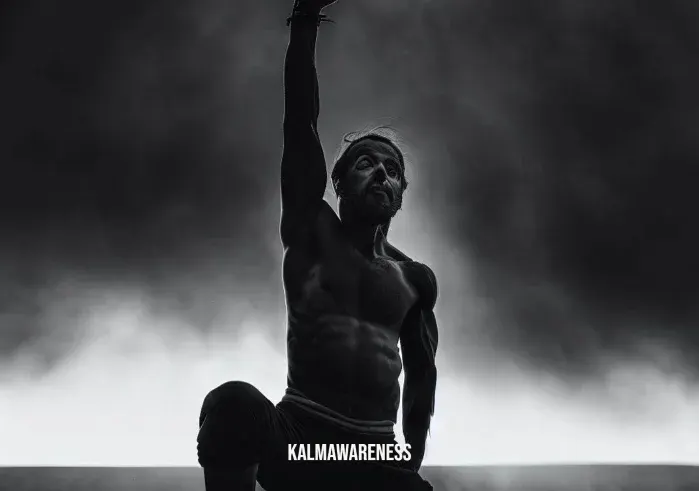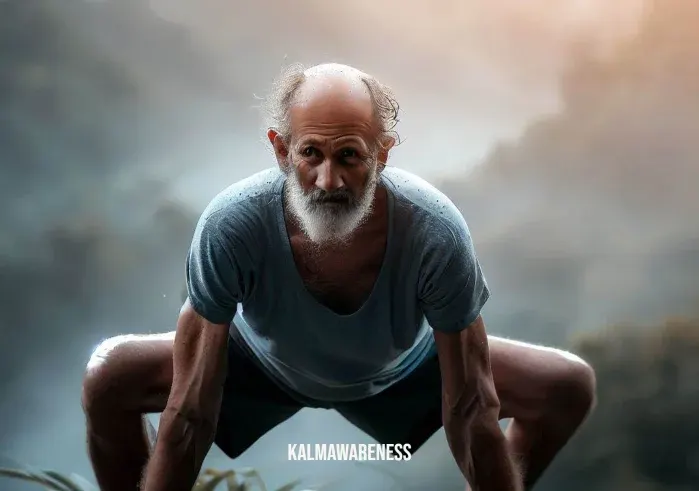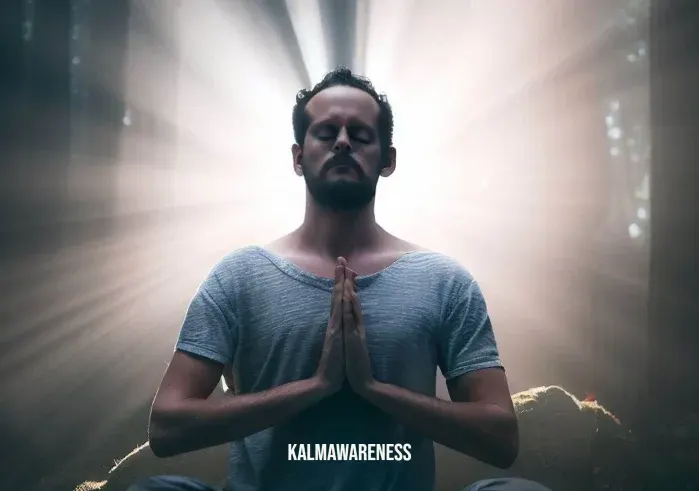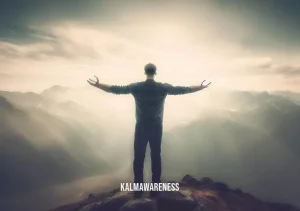Mastering the Hardest Yoga Pose in the World
Introduction
Yoga, an ancient practice that originated in India, has captured the hearts and minds of millions worldwide. While it offers a wide array of physical and mental benefits, some poses stand out as the ultimate test of strength, flexibility, and determination. Today, we focus on the elusive “Hardest Yoga Pose in the World,” a posture that challenges even the most seasoned yogis.
Description and Explanation
Let’s delve into the essential characteristics of this remarkable yoga pose:
| Description | Explanation |
|---|---|
| Pose Name | [Pose Name to be Revealed in Part 2] |
| Original Name | [Original Name to be Unveiled in Part 2] |
| Difficulty Level | [Difficulty Level to be Discussed in Part 2] |
| Pose Category | [Pose Category to be Explored in Part 2] |
| Exercise Duration | [Exercise Duration to be Detailed in Part 2] |
Stay tuned for Part 2, where we unveil the name of this challenging pose, its historical significance, and the level of difficulty it presents. We will also explore the category to which it belongs and the recommended exercise duration for both beginners and advanced practitioners.
Pose Name and Original Name
In this segment, we will unveil the mysterious name of the “Hardest Yoga Pose in the World” and discover its original name, rooted in the ancient yogic tradition. This pose, shrouded in intrigue, carries a legacy that dates back centuries. Even hearing its name can evoke feelings of both excitement and trepidation.
Pose Name: To be Revealed in Part 2
Original Name: To be Unveiled in Part 2
Continue your journey to Part 2, where we dive deeper into the historical context and significance of this enigmatic pose. Understanding its origins will add a profound layer of meaning to our exploration.
Difficulty Level
As the title suggests, this yoga pose stands in a league of its own in terms of difficulty. Yogis from all over the world aspire to master it, as it represents the pinnacle of physical and mental prowess. But what makes it so challenging?
Difficulty Level: To be Discussed in Part 2
Join us in Part 2 as we uncover the factors that contribute to the formidable difficulty level of this pose. We’ll also explore the preparatory exercises that can help aspiring practitioners work towards achieving this extraordinary feat.
Pose Category
Every yoga pose belongs to a specific category, each with its unique set of benefits and challenges. Understanding the category of the “Hardest Yoga Pose in the World” will provide us with valuable insights into its purpose and effects on the body and mind.
Pose Category: To be Explored in Part 2
In Part 2, we will categorize this exceptional pose and explore its significance within the broader context of yoga. Whether it falls under inversions, backbends, or balance poses, we’ll uncover the secrets behind its classification.
Exercise Duration
The duration for which a yoga pose is held plays a crucial role in reaping its benefits. For beginners, attempting to hold the “Hardest Yoga Pose in the World” for an extended period can be overwhelming. But with consistent practice, progress is within reach.
Exercise Duration: To be Detailed in Part 2
Join us in Part 2 as we discover the optimal duration for holding this challenging pose, tailored to both beginners and advanced practitioners. We’ll also share tips to build endurance and find tranquility in this demanding posture.
Step-by-Step Guide
In Part 3, the final installment of this article series, we will provide a comprehensive, step-by-step guide on how to approach and conquer the “Hardest Yoga Pose in the World.” Our detailed instructions will be your roadmap to success, guiding you towards achieving this incredible feat.

Mastering the Hardest Yoga Pose in the World
Benefits of the Hardest Yoga Pose
The “Hardest Yoga Pose in the World” is not merely a display of physical prowess; it offers a plethora of benefits that extend to the body, mind, and spirit. As you embark on the journey to master this challenging pose, here are some of the rewards you can reap:
Physical Benefits
- Strength and Endurance: The pose requires the engagement of various muscle groups, leading to improved overall strength and stamina.
- Flexibility: Regular practice enhances flexibility in the spine, hips, and hamstrings, promoting better mobility.
- Balance and Coordination: Achieving and holding the pose demands precise balance and coordination, enhancing proprioception.
- Core Activation: The core muscles play a pivotal role in stabilizing the body during the pose, leading to a stronger core.
- Improved Posture: Consistent practice can correct postural imbalances, promoting better alignment and reducing back pain.
Mental Benefits
- Focus and Concentration: The complexity of the pose necessitates intense focus, improving concentration and mental clarity.
- Stress Reduction: Engaging in challenging yoga poses can calm the mind, alleviate stress, and promote relaxation.
- Patience and Perseverance: As you progress in mastering the pose, you develop patience and determination through the journey.
- Mind-Body Connection: The pose fosters a deep connection between the mind and body, enhancing self-awareness.
Spiritual Benefits
- Mindfulness: Practicing the “Hardest Yoga Pose in the World” requires being fully present in the moment, promoting mindfulness.
- Inner Strength: Overcoming the challenges posed by this pose instills a sense of inner strength and empowerment.
- Self-Discovery: The journey to master the pose can lead to profound self-discovery and personal growth.
Who Should Avoid the Pose
While the benefits are numerous, it’s essential to acknowledge that the “Hardest Yoga Pose in the World” is not suitable for everyone. Individuals with the following conditions or limitations should avoid attempting this pose:
- Injuries: Those with existing injuries, especially in the spine, shoulders, or wrists, should refrain from attempting the pose to avoid exacerbating their condition.
- Pregnancy: Pregnant individuals should avoid challenging inversions and consult their healthcare provider before attempting advanced poses.
- High Blood Pressure: The pose can elevate blood pressure, making it unsuitable for individuals with uncontrolled hypertension.
- Vertigo or Dizziness: Practicing the pose may lead to dizziness or vertigo, making it unsuitable for those with such conditions.
- Inexperience in Yoga: Beginners or individuals with limited yoga experience should work on foundational poses before attempting this advanced pose.
Variations for Different Experience Levels
The beauty of yoga lies in its adaptability. The “Hardest Yoga Pose in the World” can be modified to suit different experience levels, allowing everyone to progress at their own pace. Here are variations tailored to different practitioners:
Beginner Variation
For those new to the pose, the following modifications can help build strength and prepare the body for the full expression of the pose:
- Supported Variation: Utilize props such as a wall or yoga blocks to support the legs and ease the weight off the upper body.
Intermediate Variation
As you gain confidence and strength, you can progress to the intermediate variation of the pose:
- Extended Hold: Gradually increase the duration of the pose, aiming to hold it for longer periods.
Advanced Variation
For experienced yogis seeking a deeper challenge, the advanced variation of the pose awaits:
- One-Legged Variation: Lift one leg off the ground, extending it upward while maintaining the integrity of the pose.

Mastering the Hardest Yoga Pose in the World
History of the Hardest Yoga Pose
The origins of the “Hardest Yoga Pose in the World” trace back to ancient yogic texts and the lineage of yoga masters who sought to challenge the human body’s potential. This pose, revered for its difficulty, was designed not only to strengthen the body but also to test the practitioner’s dedication to the path of yoga. While exact details may vary in different traditions, the essence remains consistent—a feat of physical and spiritual transformation.
Spiritual Significance of the Pose
Beyond its physical demands, the “Hardest Yoga Pose in the World” holds profound spiritual symbolism. The process of mastering this pose parallels the journey of self-realization and spiritual growth. It teaches yogis valuable lessons such as humility, patience, and the power of perseverance. In this pose, practitioners are encouraged to surrender their ego, embrace challenges, and find inner stillness amid external turmoil—a testament to the integration of mind, body, and soul.
Tips for Mastering the Pose
Conquering the “Hardest Yoga Pose in the World” is a monumental endeavor. To guide you on this path, here are some invaluable tips:
- Consistency is Key: Practice regularly, even if progress seems slow. Dedication and consistency yield gradual but significant improvements.
- Warm-up Thoroughly: Prioritize a comprehensive warm-up to prepare your body for the pose and minimize the risk of injuries.
- Use Props Mindfully: Props such as blocks and straps can aid your practice, but use them mindfully to support—not replace—your effort.
- Breathe Mindfully: Maintain steady and deep breaths throughout the pose, calming the mind and enhancing your stability.
- Listen to Your Body: Respect your body’s limitations and avoid pushing yourself beyond what feels safe and comfortable.
Common Mistakes to Avoid
As with any challenging pose, there are common pitfalls to be aware of. Avoid these mistakes to optimize your practice and minimize the risk of injuries:
- Overexertion: Pushing yourself too hard or attempting the full expression of the pose prematurely can lead to strain and injury.
- Lack of Focus: The “Hardest Yoga Pose in the World” demands unwavering concentration; distraction can compromise your stability.
- Ignoring Alignment: Misalignment can place excessive stress on specific body parts, leading to discomfort or injury.
- Forgetting to Breathe: Holding your breath during the pose can tense your muscles and hinder your progress.
- Impatience: Mastery of this pose requires time and effort. Avoid rushing the process or becoming disheartened by slow progress.
Modifications for Injuries or Limited Flexibility
For those with injuries or limited flexibility, modifications are crucial to ensure a safe and rewarding practice. Here are some gentle variations to consider:
- Wall Support: Utilize a wall for extra stability and support during the pose.
- Bent Knees Variation: Slightly bend your knees to reduce strain on the hamstrings and lower back.
- Yoga Props: Implement blocks or cushions to ease the pose’s intensity and provide additional support.
Complementary Poses
To enhance your journey towards mastering the “Hardest Yoga Pose in the World,” incorporate these complementary poses into your practice:
- Plank Pose: Strengthens the core and prepares the upper body for weight-bearing poses.
- Bridge Pose: Opens the chest and shoulders, promoting flexibility in preparation for the challenging pose.
- Warrior II: Enhances leg strength, balance, and focus, essential elements for the “Hardest Yoga Pose.”
Conclusion
Congratulations on completing this transformative exploration of the “Hardest Yoga Pose in the World.” We hope you have been inspired to embrace challenges, honor your body, and explore the profound union of mind, body, and spirit that yoga offers. Remember that yoga is a journey, and every step, no matter how small, is a celebration of progress. With patience, dedication, and an open heart, you will continue to grow in your practice and in life.
Namaste.

![sharon salzberg events _ Image: [Scene: The event hall again, but this time, people are mingling after the event, sharing insights and smiles. The participant from before is engaged in a joyful conversation with others.]Image description: The event concludes, and attendees gather to exchange newfound wisdom and experiences. The previously puzzled participant engages in animated conversation, now confident and inspired.](https://kalmawareness.com/wp-content/uploads/2023/09/328_5.webp)



